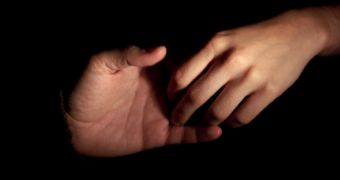When they want to express how familiar they are with a certain thing, person or area, people generally say that they know them like the back of their hands. This would seem to indicate that the human brain has a near-perfect grasp of the limbs, their position, size and dimensions. But a new study contradicts this established knowledge, showing that the cortex is in fact distorting our perception of our own hands. The team behind the investigation believes this may have something to do with the way the brain receives information from sensory systems on the body, LiveScience reports.
“The phrase 'I know the town like the back of my hand' suggests that we have near-perfect knowledge of the size and position of our own body parts, but these results show that this is far from being the case. Our results show dramatic distortions of hand shape, which were highly consistent across participants,” explains University College London professor Matthew Longo, who was also a researcher on the new study. Details of the work appear in the June 14 issue of the esteemed journal Proceedings of the National Academy of Sciences (PNAS).
The UCL experts liken this distortion to the way in which thin people tend to see their bodies as being fat in a mirror. When these sorts of perception disorders appear, they pave the way for a host of diseases, such as anorexia for example. For most people, the new investigation revealed, it would appear that the brain perceives the hand to be fatter, and with shorter fingers than they actually are. The researchers figured this out by conducting a series of experiments in which the participants were asked to point to the knuckles and fingers of their left hand. The limb was placed under a cover.
A camera was used to record where the hand actually was, and also where the participants were pointing. By analyzing the two datasets, the team found striking difference between how the limb actually looked, and how it was projected in the brain (the cortical map of the hand). The general trend among test participants was to perceive their hands as being a third shorter, and two thirds wider, than in reality. “Of course, we know what our hand really looks like. Our participants were very accurate in picking out a photo of their own hand from a set of photos with various distortions of hand shape. So there is clearly a conscious visual image of the body as well. But that visual image seems not to be used for position sense,” Longo reveals.

 14 DAY TRIAL //
14 DAY TRIAL //